Main Menu
- Home
- Products
- Applications
- Product Support
- Service
- Learn
- Product News
- About Us
- Contact Us
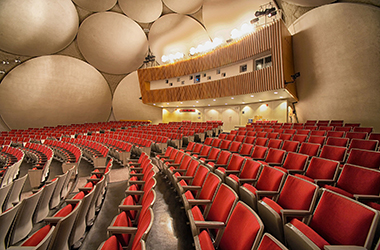 What is reverberation time?
What is reverberation time?We know that sound consists of pressure waves, so it makes sense that in a room sound bounces around. Sound waves can bounce off the floor, walls, ceiling, and any other reflective surface; gradually losing energy over time. Reverberation is the collection of the reflected sounds. Reverberation time is the time after the source of the sound has ceased that it takes the sound to fade away.
How can we make objective measurements of reverberation? We use the metric Reverberation Time 60 (RT60). RT60 is defined as the measure of the time after the sound source ceases that it takes for the sound pressure level to reduce by 60 dB.
Why 60 dB? That seems like a somewhat arbitrary number, but here's one way to think of it: the loudest sound level in orchestral music is typically 100 dB, while 40 dB is a reasonable background noise level for listening to music. So, RT60 measures the time it takes for the loudest noise in a concert hall to fade to the background level. Or, as the website HyperPhysics*, from Georgia State University, puts it, "60 dB is a typical range of dynamic levels for orchestral music." It is also important to note that reverberation time in a particular space varies with the frequency of the sound source.
This question is more complicated than you might think. The optimum RT60 depends on the use of the room. There is a "sweet spot" for RT60. It can be too high (generally, > 2 seconds), and the room is considered "echoic." It can be too low (< 0.3 seconds), and the room is called acoustically dead. Sometimes the term "live" is used to describe a room with a longer reverberation time.
It's important to consider what the room will be used for!
Smooth surfaces cause sound waves to bounce around, so include soft, absorptive surfaces in the room. Smaller rooms lead to shorter reverberation times.
In order to measure RT60, the room must first be energized with noise. This can be done by popping a balloon or using a dodecahedral speaker or other sound source. A sound level meter with special room acoustics options measures the time for the sound level to decay and reports the result.
It can be difficult to put enough sound into a room to fully measure RT60 directly, so we often extrapolate it using just a portion of the decay. If the time for the sound pressure level to decay by 20 dB is measured and multiplied by 3, we call our reverberation time a T20 measurement. If we measure the time for the sound pressure level to decay by 30 dB and multiply by 2, this is called a T30 measurement. In both cases, the measurement is begun after the first 5 dB of decay.
Example of Reverberation Time T20
RT60 = ( time to decay 20 dB ) * 3 = ( 0.56 s * 3 ) = 1.68 s
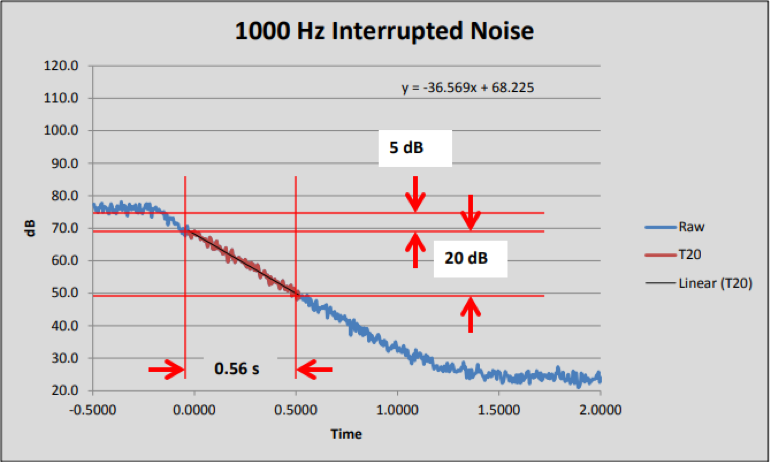
Example of Reverberation Time T30
RT60 = ( time to decay 30 dB ) * 2 = ( 0.83 s * 2 ) = 1.66 s
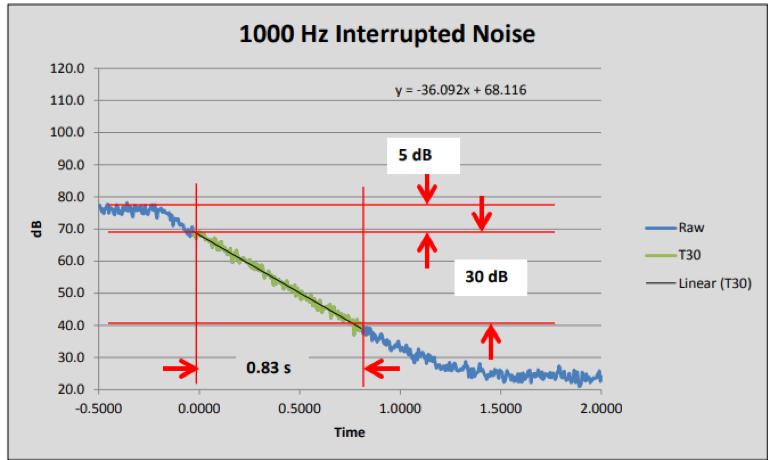
In this example, Reverb Time T20 (1.68 s) and Reverb Time T30 (1.66 s) are a good match!
Based upon the size of a room, standing waves will occur at certain frequencies. When there is a standing wave, there is maximum pressure at an anti-node and no pressure variation at a node. In order to account for this, the best practice is to measure at several different positions in the room and/or with the sound source at several different locations.
Once multiple measurements have been made, results should be averaged. There are two ways to average RT60 measurements:
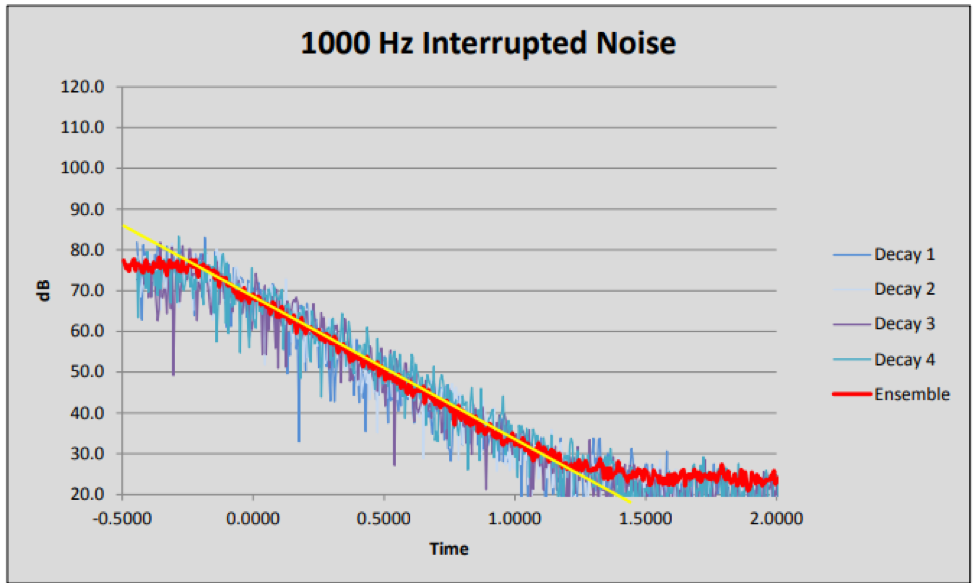
Example of ensemble averaging of four separate measurements.
Consider the range!
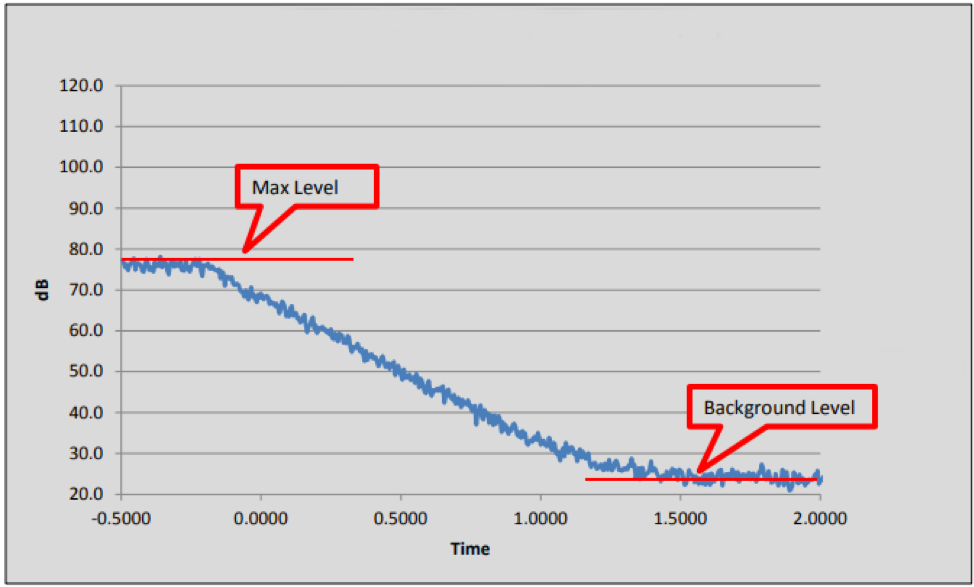
In this example decay, the maximum sound level (or the level of the sound we introduced into the room) is approximately 78 dB, and the background sound level of the room is approximately 24 dB. Since the difference between the maximum and background levels is > 45 dB, T30 can be used to calculate RT60.
*hyperphysics.phy-astr.gsu.edu
**sciencedirect.com